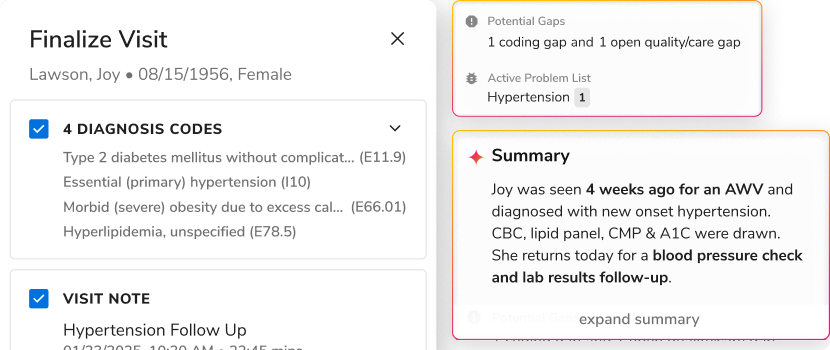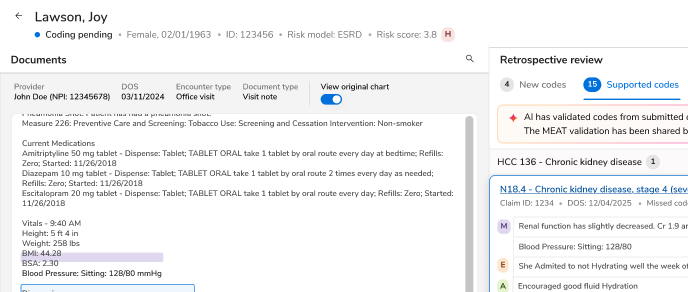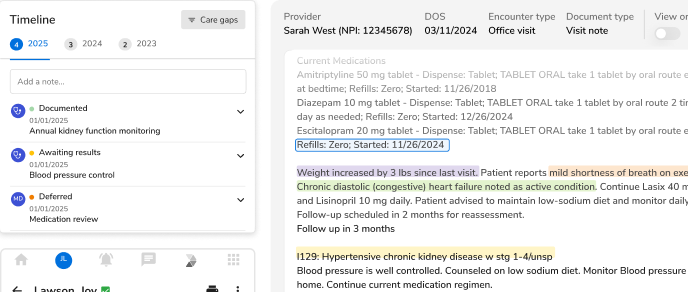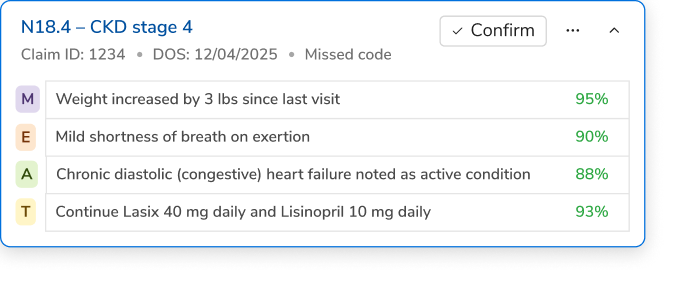How to Close Care Gaps and Cut Benefits Costs through a Virtual Care Solution

The three priorities of healthcare delivery — cost, quality, and access — need not be at odds with each other. Employers today are increasingly engaged in a range of innovative approaches to improve healthcare quality and control costs that directly address some of the underlying flaws in the system.
By using data-driven insights, employers are striving to nudge their employees towards higher value and efficient care, and away from potentially wasteful services. As employers make stepwise changes in implementing value-based care, they need to integrate a comprehensive Virtual Care Solution to address a range of conditions, including comorbidities.
Employers can improve employee health outcomes through care programs that utilize proven care protocols. They can reduce the total cost of care through interventions that reduce the likelihood of exacerbations that could result in Emergency Room (ER) utilization, surgery or inpatient stays.
But how do they close care gaps and manage the rising healthcare costs in the organization? What are the top drivers of rising healthcare spending for employers?
What are Gaps in Care?
A study revealed that the two main drivers of healthcare overspending are failure of care delivery and failure of care coordination. These failures are amplified when health care plans address high-risk patients with comorbidities.
“Gaps in care” refer to the discrepancies between recommended best practices in healthcare and the care provided to patients. These can manifest in several ways, including high-risk patients who fail to adhere to recommended screenings, their inability to follow the prescription guidelines, inaccessibility to the right care at the right time, and cases where the patient’s diagnosis isn’t shared with their PCP, to name a few.
These care gaps are a quality issue for both patients and payers like self-insured employers, and closing these gaps can help offer better health and wellness to employees and their families.
How does Virtual Care address these Gaps in Care?
Virtual care is the key to identifying and closing gaps in care. By evolving care management tools, employers can find out where there are opportunities for improvement in their benefits utilization and compliance with recommendations.
Employers can ensure compliance to benefit plans and reduce costs through three actions. First, they can use data- and analytics-supported targeted outreach to their employees. Second, they can integrate more real-time data into their plans to enable timely, personalized interventions. Finally, employers can support omni-channel communication to help expand access.
The same is the case with high-cost employees living with chronic conditions- earlier screening, preventive care, and compliance with recommended treatment procedures can improve health outcomes and enable tailored recommendations for employer-sponsored benefits.
Why Virtual Care?
- Provide real-time insights: A comprehensive Virtual Care Solution empowers employees to address a wide range of health challenges through a single modality. It also enables personalized interventions through smart reminders and tech-enabled health coaching.
- Sustain behavior change: Comprehensive virtual care support and clinical expertise drives sustained behavior change, which leads to better outcomes and reduced strain on the healthcare system.
- Enable whole-person care: By addressing the impact of multiple health challenges on the overall mental and physical well-being of employees, virtual care enables whole-person care with a 360-degree view of the health record. This also helps address social determinants of health, while supporting the creation of realistic, individualized care plans.
- Improve health outcomes: By reaching more employees more effectively, it enables automated care protocols to address gaps in care. Through programs built on evidence-based clinical guidelines, it addresses complex health needs of the employees.
Actionable insights that employers can use to close Gaps in Care
What can employers do once they identify gaps in care? There are several interventions that benefits consultants and self-insured employers can consider:
- Chronic Care Management: While the market is crowded with digital point solutions that address specific issues, it lacks a solution that offers comprehensive, evidence-based programs across a broad range of conditions. Such a solution would be particularly useful to manage plans for employees and their families living with comorbidities, who are much more likely to drive higher cost. By adding care management programs to address chronic conditions, employers can offer virtual health coaching, remote patient monitoring, regular check-ins, and other help complying with treatment protocols.
- Engaging and educating employees: Employers can help employees understand the benefits plans and their coverage options through smart reminders and real-time interventions to help employees navigate their healthcare journey.Employers can support the creation of realistic, individualized care plans while accessing comprehensive programs on a single, cohesive platform. By monitoring patient health, getting feedback, and enabling reminders for health screenings and medications, employers can improve health outcomes and correct irregularities.
- Enabling personalized interventions: By integrating remote monitoring with virtual health coaching, employers can track and engage employees, and also connect them with healthcare providers. By automating care protocols for efficient and effective service, employers can reach more employees more effectively, and provide additional support to employees at high risk.
To learn how you can manage the growing burden of chronic conditions through a virtual care solution, get a demo.
For more updates, subscribe.

.png)





.png)









.svg)
.svg)

.svg)

